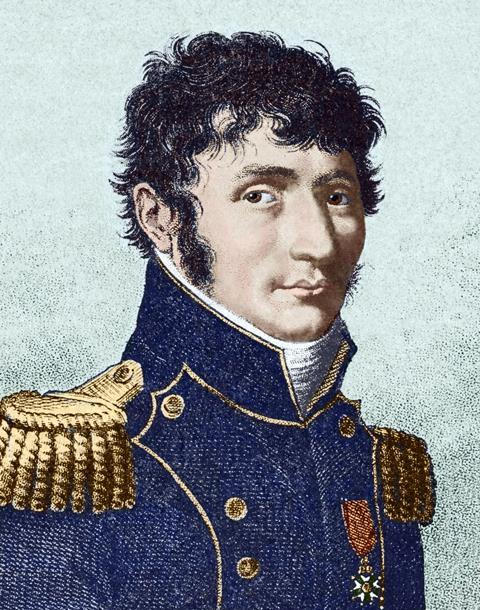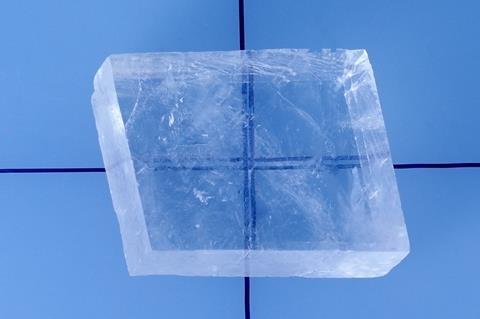Getting polarisation right despite theorising molecules of light

Serendipity is much misunderstood. It is sometimes equated with a lucky accident, a discovery that might have been made by almost anyone but for the vagaries of chance, a bit like winning the lottery. The reality is rather different. Serendipitous discoveries are made by individuals deeply steeped in closely related science who not only spot a discrepancy, but follow the observation relentlessly to establish its reality.
Etienne-Louis Malus’ discovery of the polarisation of light is a good example. Malus was born in Paris, France, into a well-connected family. An excellent student, he won a scholarship to the Military Engineering School at Mézieres where Charles Augustin Coulomb had studied. Unfortunately, the French Revolution closed the school, leading Malus to volunteer for the army where he built earthworks in Dunkerque. Malus so impressed his superiors that they seconded him to the recently founded École Polytechnique in Paris.
When he returned to the army it was as a military engineer; in 1798 he was part of Napoleon’s expeditionary force to Syria and Egypt where he contracted the plague twice. During his convalescence, he began to think about light. At the time the contrast between the particle and wave theories of light was completely unresolved. In one of his first papers, Malus argued that light – consisting of particles that were emitted by hot objects – could not be an element, as suggested by Antoine Lavoisier, but rather must be a compound of ‘caloric’ and oxygen. He made an incorrect connection between colour and temperature, and proposed that the ‘molecules of light’ travelled faster in water. One can sniffily imagine this to be an inauspicious start to a career as a scientist, but hindsight is a wonderful thing; Malus’ strongly mathematical approach to optics started to attract attention.
Malus returned to France in 1801, and in 1809 he was posted back to Paris where he also acted as an examiner at the École Polytechnique. In his Treatise on Optics he carefully traced reflected and refracted rays, extending Christiaan Huygens’ work from a Newtonian perspective. A key challenge was to understand double refraction, the doubling of images viewed through Iceland spar (calcite) or quartz. Huygens had noted that one of the two images could be made to disappear if an object were viewed through two pieces of calcite in series, an observation he called ‘marvellous’ but could not explain.

While looking through a piece of calcite, Malus noticed that the reflection of the sun off a window in the distance would almost vanish if the crystal were rotated to a specific angle. Astonished, Malus began a flurry of very careful experiments. He found that not only was there a deep connection between refraction and reflection but there was also a mysterious additional angular effect perpendicular to the direction of travel of the light. By analogy with magnetism, he imagined light ‘molecules’ to have pairs of poles, the interaction of light with solids being like the alignment of a compass needle in a magnetic field. He termed the effect polarisation and derived a key expression for its intensity as a function of angle.
In calcite crystals the behaviour was even weirder: the two rays were polarised at right angles to each other. This was sensational stuff that attracted wide attention and praise. But Malus’s contributions were almost at an end; he died of tuberculosis on 24 February 1812.
It was therefore left to others to develop Malus’s discovery. In 1811, at the École Polytechnique, Francois Arago reported spectacular ‘prismatic’ colours when candlelight reflected in a mirror passed through mica before being observed through a piece of calcite. Arago also designed the first polarising filter by gluing together two suitably cut pieces of calcite, and established that the direction/angle of polarisation could be changed by passing polarised light through a piece of clear quartz. It was the first observation of optical rotation.
In 1815 Arago’s friend Jean-Baptiste Biot picked up the work. After extensive experiments on solids, Biot passed polarised light through some turpentine. To his astonishment colours appeared just as they did with mica and with quartz. Biot commissioned the instrument maker Jean-Nicolas Fortin to make him a 16cm tube with glass windows, the first polarimeter tube. Biot would show a quantitative relation between the measured rotation, the concentration of the solution and the path length.
Malus, Arago and Biot had each ‘stumbled’ across different aspects of the interaction of light with matter, not by chance, but neither by design. Ironically, their working model for its causes was quite wrong. But polarisation would come to provide a broad arsenal of delicate tools to probe the structure of matter, and lead chemists like Louis Pasteur to the idea of molecular chirality. It reminds us that ideas and discoveries may be something of a game of chance. But some people play with loaded dice.
References
E-L Malus, Sur un propriete de la Lumiere reflechie des corps diaphanes, Nouv. Bull. Sci., 1808, 2, 266-270;
F Arago, Extrait d’un Memoire…, Nouv. Bull. Sci., 1811, (10) 358-361.
J-B Biot Phenomenes de polarization successive… Bull. Sci., 1815, 190-192












No comments yet